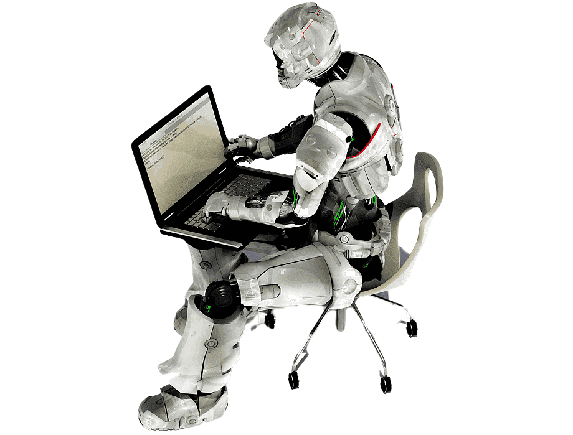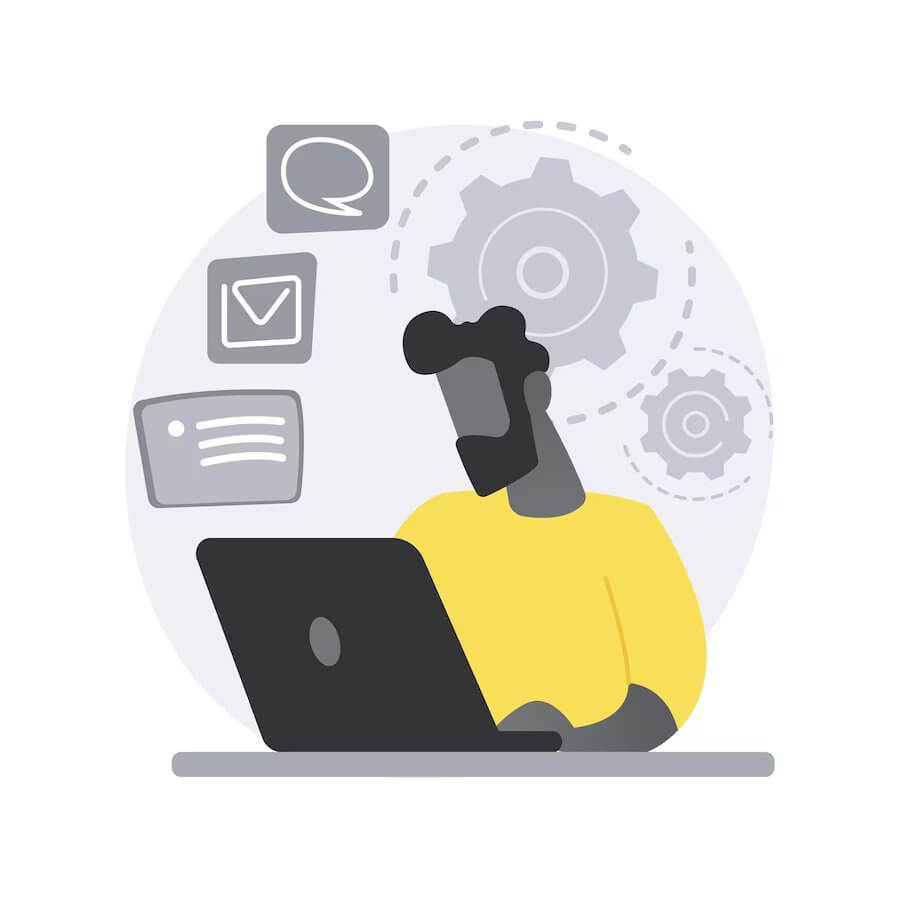AI Innovators: Pioneering Roles Shaping the AI Industry

In a world fueled by innovation, artificial intelligence (AI) stands out as a transformative force, reshaping industries and redefining the way we live and work. But who are the visionaries driving this AI revolution? What roles are they playing in shaping the AI industry’s future? Join us on a journey through the minds of AI innovators, exploring the diverse roles they occupy and the profound impact they have on our technological landscape.
The Visionaries Behind AI: Who Are They?
AI is not a solitary endeavor but a collaborative venture of brilliant minds from various backgrounds. These innovators encompass a wide spectrum of roles, each contributing uniquely to the AI industry’s growth.
Data Wizards: Unearthing Insights from Mountains of Data
Data Scientists: Data scientists are the modern-day alchemists, turning raw data into gold mines of insights. They design complex algorithms and employ statistical techniques to make sense of massive datasets. With skills in programming languages like Python and R, they’re the ones who turn numbers into actionable intelligence.
Machine Learning Engineers: Machine learning engineers take data science a step further. They build and fine-tune machine learning models, enabling AI systems to learn and improve over time. Their expertise is crucial for applications like recommendation systems and image recognition.
Architects of the Future: Designing AI Systems
AI Architects: These architects are the blueprints behind the scenes. They design the architecture of AI systems, ensuring they’re scalable, efficient, and reliable. They determine how different AI components interact, from algorithms to data storage.
Cloud AI Engineers: In the age of cloud computing, AI needs a home. Cloud AI engineers specialize in deploying AI solutions on cloud platforms like AWS, Azure, or Google Cloud. They ensure AI applications can scale to meet growing demands while maintaining cost-efficiency.
The AI Artisans: Crafting User-Friendly Interfaces
UX/UI Designers: User experience (UX) and user interface (UI) designers bridge the gap between AI and humans. They create interfaces that are intuitive and visually appealing, making AI accessible to a wider audience. Design is key to user acceptance and adoption.
Conversational AI Designers: In a world of chatbots and virtual assistants, conversational AI designers are essential. They craft natural dialogues and user interactions, making AI feel more human-like and conversational.
What Are Their Key Responsibilities?

These AI innovators wear multiple hats, each with its own set of responsibilities. Let’s delve deeper into what these roles entail.
Data Scientists: Cracking the Data Code
Data scientists are the detectives of the AI world. They gather, clean, and analyze data to extract valuable insights. Their responsibilities include:
- Data Collection: Gathering data from various sources, including sensors, social media, and databases.
- Data Cleaning: Removing errors and inconsistencies from datasets to ensure accuracy.
- Algorithm Development: Creating predictive models and algorithms to solve specific problems.
- Data Visualization: Presenting data findings in a clear and understandable manner.
Machine Learning Engineers: Building Intelligent Systems
Machine learning engineers are the builders. They develop, test, and deploy machine learning models to create AI systems that can learn and adapt. Their tasks include:
- Model Training: Using large datasets to train machine learning models.
- Hyperparameter Tuning: Fine-tuning model parameters to optimize performance.
- Deployment: Deploying models in real-world applications and ensuring their reliability.
- Continuous Monitoring: Monitoring AI systems to detect and address issues as they arise.
AI Architects: Crafting the Foundation
AI architects are the architects and planners. They design the framework that AI systems operate within. Their roles involve:
- System Design: Creating the overall structure and flow of AI applications.
- Scalability Planning: Ensuring AI systems can handle increased workloads as they grow.
- Resource Allocation: Allocating computational resources effectively.
- Security Integration: Incorporating robust security measures to protect AI systems.
Cloud AI Engineers: Taking AI to the Cloud
Cloud AI engineers are the cloud experts. They deploy AI solutions on cloud platforms, making them accessible and scalable. Their responsibilities encompass:
- Cloud Integration: Integrating AI systems with cloud services for scalability.
- Cost Optimization: Managing cloud resources to control costs.
- Backup and Recovery: Implementing backup and recovery solutions for AI data.
- Scalability Testing: Ensuring AI applications can handle spikes in demand.
UX/UI Designers: Shaping User Experiences
UX/UI designers are the artists of AI. They design interfaces that make AI accessible and enjoyable for users. Their duties include:
- User Research: Conducting research to understand user needs and preferences.
- Wireframing and Prototyping: Creating visual prototypes of AI interfaces.
- Usability Testing: Gathering feedback from users to improve interface design.
- Accessibility Design: Ensuring AI interfaces are accessible to all users.
Conversational AI Designers: Humanizing AI Interactions
Conversational AI designers specialize in making AI conversations feel natural. Their responsibilities include:
- Dialog Flow Design: Crafting dialogues that feel like human conversations.
- Intent Recognition: Developing algorithms to understand user intentions.
- Personality Development: Giving AI personas unique personalities and tones.
- User Feedback Integration: Using user feedback to refine conversational AI.
How Do They Collaborate?

The AI industry thrives on collaboration. These innovators work together seamlessly to create AI solutions that push the boundaries of what’s possible.
Data Scientists and Machine Learning Engineers: The Dynamic Duo
Data scientists and machine learning engineers are a powerful combination. Data scientists uncover patterns and insights, while machine learning engineers turn these findings into functional AI models. They collaborate by:
- Close Communication: Regular discussions to align on project goals and data requirements.
- Iterative Development: Data scientists provide feedback on model performance, leading to model improvements.
- Version Control: Using tools like Git to track changes and collaborate on code.
AI Architects and Cloud AI Engineers: The Infrastructure Team
AI architects and cloud AI engineers work hand in hand to create scalable and efficient AI systems. They collaborate through:
- Design Reviews: Architects share system designs for feedback and optimization.
- Resource Allocation: Cloud engineers ensure AI systems have the necessary resources in the cloud.
- Scaling Strategies: Jointly planning how AI systems will scale to meet growing demands.
UX/UI Designers and Conversational AI Designers: Crafting User-Friendly AI
UX/UI designers and conversational AI designers are focused on user experience. They collaborate by:
- Design Workshops: Joint sessions to align on interface design and conversational flow.
- Feedback Loops: Regularly gathering user feedback to refine design elements.
- User Testing: Conducting usability tests to ensure AI interfaces are user-friendly.
What Challenges Do They Face?
The path to AI innovation is not without obstacles. AI innovators encounter various challenges in their roles, but their determination keeps them pushing the boundaries.
Data Scientists and Machine Learning Engineers: The Data Dilemma
- Data Quality: Poor-quality data can lead to inaccurate AI models.
- Data Privacy: Ensuring data handling complies with privacy regulations.
- Model Interpretability: Making AI models more transparent and understandable.
AI Architects and Cloud AI Engineers: Scalability Struggles
- Scalability Complexities: Scaling AI systems can be technically challenging.
- Cost Management: Keeping cloud costs in check as AI systems grow.
- Security Concerns: Ensuring AI systems are secure in the cloud environment.
UX/UI Designers and Conversational AI Designers: Humanizing AI
- User Adoption: Convincing users to embrace AI interfaces and virtual assistants.
- Naturalness Challenge: Crafting AI conversations that feel truly human.
- Ethical Considerations: Addressing the ethical implications of conversational AI.
The Future of AI Innovation: What Lies Ahead?
As AI innovators continue to push boundaries, the future of AI looks promising. Here are some exciting developments to anticipate:
- Advanced AI Models: Expect more advanced AI models that can handle increasingly complex tasks. GPT-4, anyone?
- AI-Driven Healthcare: AI will play a pivotal role in healthcare, from early disease detection to personalized treatment plans.
- Ethical AI: Ethical considerations will take center stage, with a focus on fairness, transparency, and responsible AI.
- AI in Education: AI-powered education tools will revolutionize learning, providing personalized support to students.
AI innovators are the unsung heroes of the AI industry, playing pivotal roles in shaping its future. From data wizards to UX/UI designers, each role contributes uniquely to the AI landscape. Collaboration and determination drive them forward, overcoming challenges and paving the way for a brighter AI-powered future. As we look ahead, the possibilities are limitless, and AI continues to redefine what’s possible in our rapidly changing world.
Frequently Asked Questions (FAQ) About AI Innovators and Their Roles in Shaping the AI Industry
Got questions about AI innovators and their roles in shaping the AI industry? You’re in the right place! We’ve compiled a list of frequently asked questions to provide you with clear and concise answers.
- What are AI innovators?
AI innovators are individuals who actively contribute to the development and advancement of artificial intelligence technologies. They encompass a variety of roles, including data scientists, machine learning engineers, AI architects, cloud AI engineers, UX/UI designers, and conversational AI designers, among others.
- What do data scientists do in the AI industry?
Data scientists are responsible for gathering, cleaning, and analyzing data to extract valuable insights. They create predictive models and algorithms to solve specific problems and present data findings in an understandable manner.
- What is the role of machine learning engineers in AI?
Machine learning engineers build and fine-tune machine learning models, enabling AI systems to learn and improve over time. They play a crucial role in developing applications like recommendation systems and image recognition.
- What does an AI architect do?
AI architects design the architecture of AI systems, ensuring they are scalable, efficient, and reliable. They determine how different AI components interact, from algorithms to data storage.
- What is the role of cloud AI engineers?
Cloud AI engineers specialize in deploying AI solutions on cloud platforms like AWS, Azure, or Google Cloud. They ensure AI applications can scale to meet growing demands while maintaining cost-efficiency.
- How do UX/UI designers contribute to the AI industry?
UX/UI designers create user-friendly interfaces for AI applications. They conduct user research, design interfaces, and ensure that AI is accessible and enjoyable for users.
- What do conversational AI designers focus on?
Conversational AI designers specialize in making AI interactions feel natural and human-like. They craft dialogues, develop algorithms for understanding user intentions, and create unique AI personas.
- How do AI innovators collaborate in the AI industry?
AI innovators collaborate closely, depending on their roles. For instance, data scientists and machine learning engineers work together to turn data into AI models. AI architects and cloud AI engineers collaborate on system design and scalability, while UX/UI designers and conversational AI designers ensure user-friendly interfaces.
- What challenges do data scientists and machine learning engineers face?
Data scientists and machine learning engineers encounter challenges such as data quality issues, data privacy concerns, and the need for making AI models more interpretable.
- What are the common challenges for AI architects and cloud AI engineers?
AI architects and cloud AI engineers often deal with scalability complexities, cost management in cloud environments, and ensuring the security of AI systems.
- What challenges do UX/UI designers and conversational AI designers encounter?
UX/UI designers and conversational AI designers face challenges related to user adoption, crafting natural AI interactions, and addressing ethical considerations in AI design.
- What can we expect in the future of AI innovation?
The future of AI innovation holds promises of advanced AI models, AI-driven healthcare applications, a stronger focus on ethical AI, and the integration of AI in education to provide personalized learning experiences.